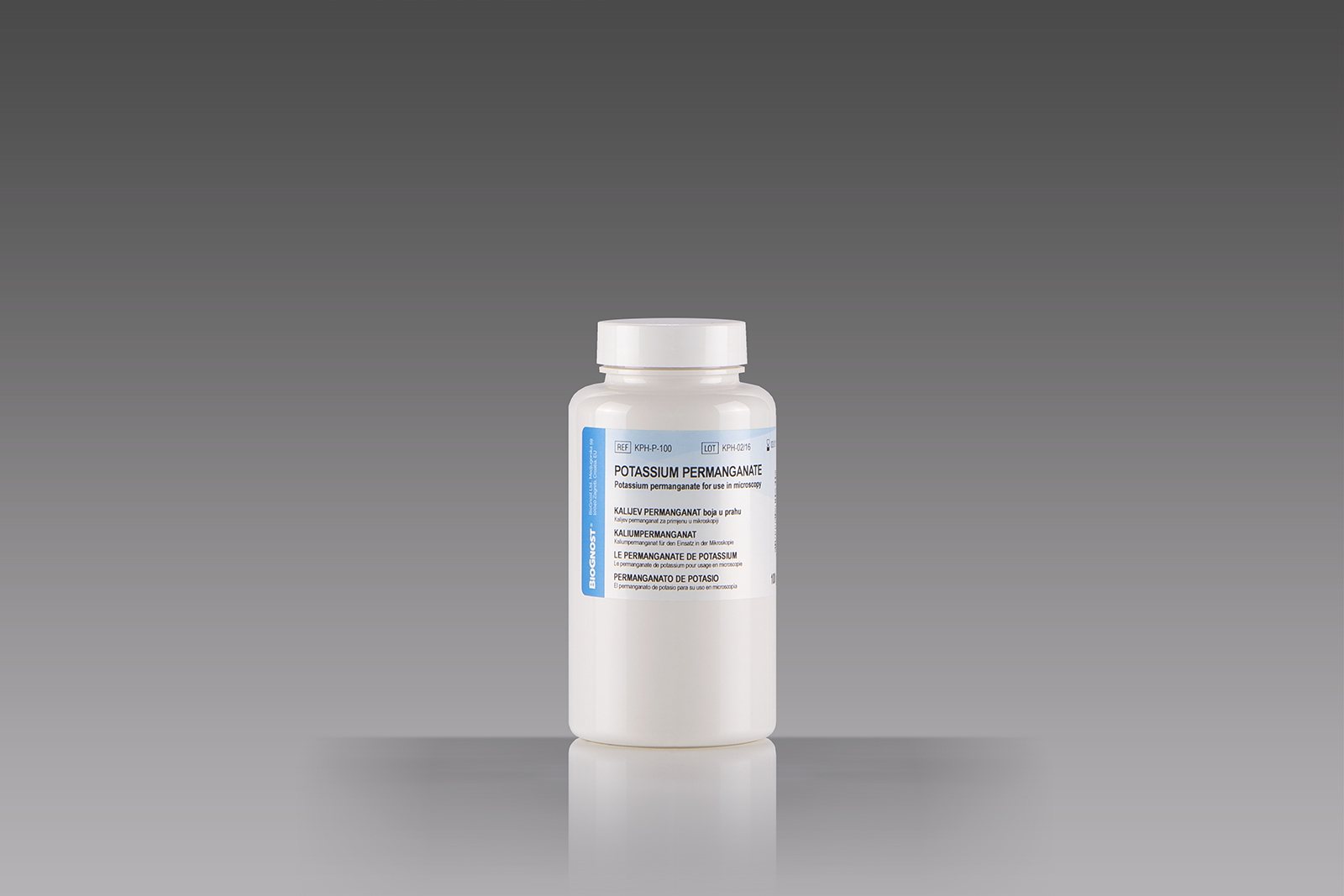Introduction
BioGnost’s Potassium permanganate for histology is a salt that contains K+ and MnO4– ions. It is a strong oxidizing agent that provides purple color when dissolved in water. Solution evaporation creates purple-black, shining crystals. Potassium permanganate decomposes under light. It is industrially manufactured from manganese dioxide. Due to its strong oxidizing properties, it is used as an antiseptic. Diluted solutions are used for treating dermatitis and fungal infections on arms and legs. In histology, KMnO4 is used for bleaching melanin that makes tissue details “blurry”. It can also be used for differentiating between AA amyloids and the rest of amyloids deposited in tissue. Incubation of tissue fixed with potassium permanganate prevents staining AA amyloids with Congo Red dye, and it does not affect other types of amyloids. Oxidation properties of potassium permanganate are utilized during fluorescence staining of acid-fast bacteria (KMnO4 is used as a counterstain).


